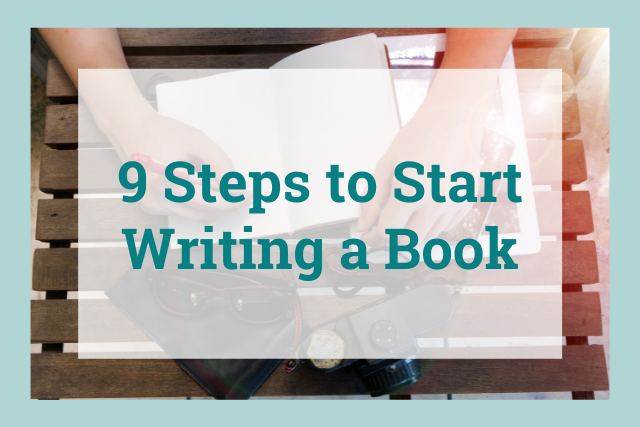
So, you’ve finally decided to write a book. But how on earth do you get started?
This article makes a couple of assumptions. First, that this is your first attempt at writing a book, and second, that you have a bit of creative writing experience already.
Yet, even with creative writing experience, beginning to write a book isn’t easy, and the actual writing process is a commitment. You’ll need to have regular writing sessions for a significant period of time.
But you can do it! These nine steps cover every aspect of the writing process. Follow them, and you’ll reach your goal.
What If You’re a Beginner at Writing Books?
You’re not alone. Everyone starts out as a beginner, even the best and most successful authors.
As an aspiring writer of books, you should spend most of your spare time reading them.
Stephen King, the massively successful, prolific writer emphasizes this.
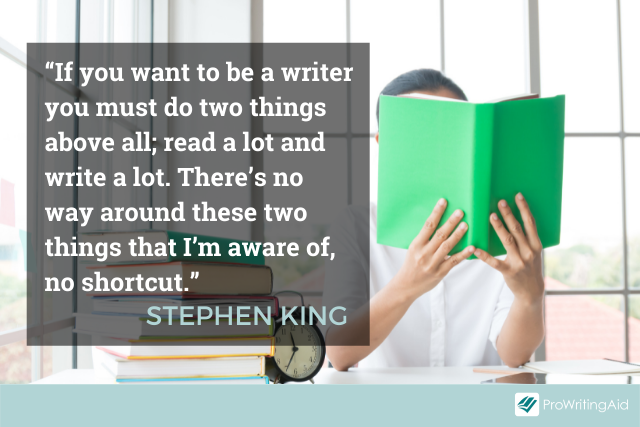
He also says writers should read every genre and style.
Read the classics, but read junk books and bad books too. This varied experience will show you the kind of writing you don’t want to produce, and writing that just doesn’t work.
Read widely, across genres, but also specifically. Immerse yourself in the genre you wish to write. Stephen King meant it when he said writers need to read “a lot.”
Your efforts will inform your writing style and choices. Every novel that you read will teach you what to do or what not to do with plot development, characterization, point of view, and style.
Almost all good writers imitate other authors, often without realizing it, as they begin writing. Many will have gone through phases of reading Hemingway and writing in stripped down, barebone sentences. Others have worked their way through a James Joyce novel and imitated his modernist, stream-of-consciousness language.
The more voices you read, and then imitate, the closer you will get to finding your individual writing voice and style.
Author Neil Gaiman shared this on how he generates ideas for books:
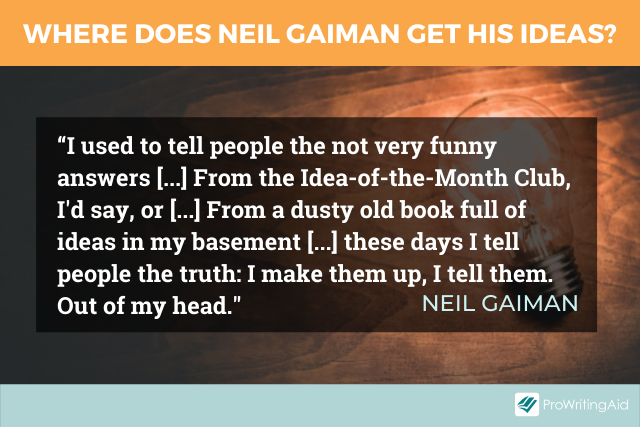
9-Step Guide on How to Start Writing a Book
Once you have read a variety of books within each genre, it is time to start writing your book.
Here are our nine no-fuss steps for beginner writers.
1. Decide What Your Book Will Be About
The first thing you need to do is decide what your novel will be about. The idea doesn’t have to be thoroughly fleshed out; think of it as a seed from which your story will grow.
J.R.R. Tolkien got the idea for The Hobbit after absentmindedly writing on a piece of paper “in a hole in the ground there lived a Hobbit.” J.K. Rowling knew she wanted to write about a boy wizard with black hair and spectacles. And George R.R. Martin wrote A Game of Thrones after picturing dire wolves in the snow.
Clearly, one way of getting an idea is being mindful of your scribbles, or doodles, or visions. Tolkien could have just thrown his odd, scribbled sentence away. Rowling could have ignored the image of the boy in spectacles, and Martin could have forgotten about his dire wolves. Instead, they chose to focus and explore their ideas.
If that doesn’t work, start with your genre.
It’s important to write in a genre you enjoy. You’ll be spending a lot of time with your developing novel, so choose a world you’ll be happy to explore.
Consider the basic characteristics of your genre, then add a twist.
When Lee Child created the Jack Reacher thriller series, he knew he needed a compelling hero or protagonist, a powerful villain, high stakes, and fast-paced action.
Then he added a twist.
In an article about the author, Bob Cornwell quotes Child’s claim that he created Reacher “‘as an antidote to all the depressed and miserable alcoholics that increasingly peopled the genre.’”
Child made Reacher a tough guy, like most thriller protagonists, but a friendly, decent, uncomplicated one.
Consider the components you need for your genre. Perhaps you’ll twist the setting or give your character an unusual ability. That twist might be the very idea that inspires your book!
2. Research and Outline Your Book
Writing fiction requires ideas, imagination, and research. Your story may be made up, but it needs to ring true to the reader.
Factual research provides you with the scientific,technical, or historical details you will need to make the plot work.
Getting the logic of the story correct from the beginning—whether that be the historical accuracy of the events, or specific details of an ancient religion’s rites—will allow everything else to fall into place later.
One reason Andy Weir’s The Martian was so successful was that the entire story was science-driven, and all the math and science were correct.
John Grisham’s experience as a lawyer gave his legal thrillers a sense of legitimacy. His knowledge of the court system and legal process were integral to the success of his writing.
You also need to research your genre. This is essential for two reasons.
First, you want to ensure your killer idea is truly original before you start your actual writing.
Let’s say you come up with an idea for a PR guru who moves from London to the country and ends up solving cozy mysteries. Your genre research will lead you to Agatha Raisin rather quickly! You might be disappointed at first, but you’ll have saved yourself countless hours of wasted writing sessions.
Second, you’ll get a sense of the length and other common characteristics of your chosen genre. You’ll see a pattern of fan-favorite tropes and can figure out which you want to lean into and which you want to twist.
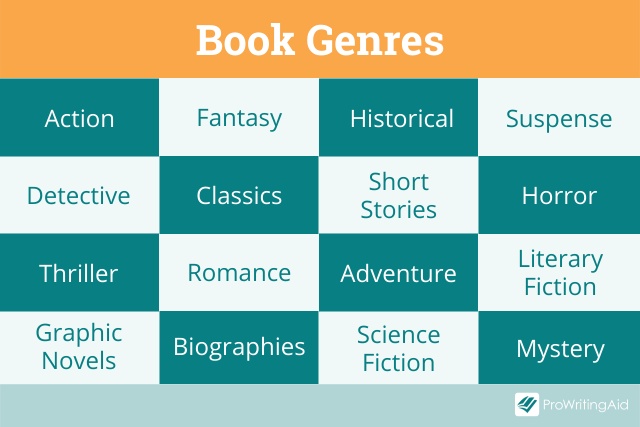
3. Structure Your Novel
Before you begin writing, create an outline of your plot. A plot outline will give you a framework. You can explore ideas within the framework and make adjustments as you go, but that initial structure will help you keep your ideas organized.
A classic plot structure for a first novel is the three-act structure, which is the format used for some of the most successful novels ever written, such as Suzanne Collins’ The Hunger Games.
The three-act structure works like this:
In Act One, you “set the stage” for your story.
- Establish the setting: describe where and when the story occurs.
- Introduce the characters: show the reader who the players are and who the story is about.
- Give background on the conflict: establish what problem is driving the story and who is involved in that conflict.
- Set the conflict in motion: present the inciting incident—the event that sends the conflict and characters into action.
In Act Two, you take the main characters through their journey.
- Develop the rising action: this is the longest part of your story. It’s where characters encounter problems and must find new methods of dealing with those problems.
- Add points of interest: include plot twists, turns, and complications.
- Develop characters: continue revealing and enriching elements of the characters so your readers invest in their journeys.
In Act Three, you resolve the conflict.
- End the conflict: resolve the problem driving the story. Remember, resolutions don’t have to be happy; they just need to be satisfying.
- Explore characters: show how your characters have changed because of the journey.
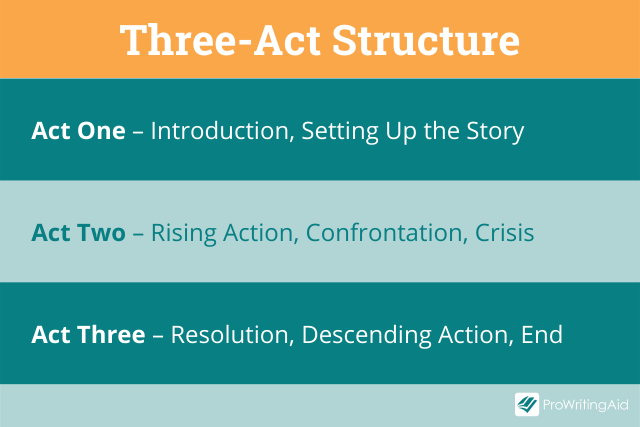
This tried-and-true formula is so useful for first-time novelists because it breaks the novel into chunks, pacing it so each act ends on a pivotal moment in the plot. When executed correctly, there are waves of narrative that leave the reader wanting more.
4. Use First- or Third-Person Point of View
Point of view (POV) is the viewpoint used to tell a story. There are three main POV options:
First-Person POV tells the story from a character’s (usually the main character’s) point of view. That character uses “I” and “me” as well as “we” and “us” in their narration. The reader only gets the narrator’s perspective on the story’s events. First-Person narration is popular in fiction writing.
Second-Person POV narrators directly address the reader as “you,” as if the reader is the protagonist. This POV is less common in fiction writing.
Third-Person POV narrators are “invisible voices” telling the story of the characters and referencing them as “he,” “she,” or “they.” Third-person narrators are omniscient. They know everything about all the characters and give an unbiased telling of the story.
So which POV should you use?
Unless you are writing a choose-your-own-adventure book in which the reader is the protagonist, there’s really no need to consider second-person POV.
First-person POV allows the reader to get close to the character, usually the protagonist, who is telling the story. The reader experiences the story through that character’s eyes and learns what that character is thinking. That close connection creates empathy in the reader for the character.
A classic example of first person POV is Holden Caulfield in The Catcher in the Rye.
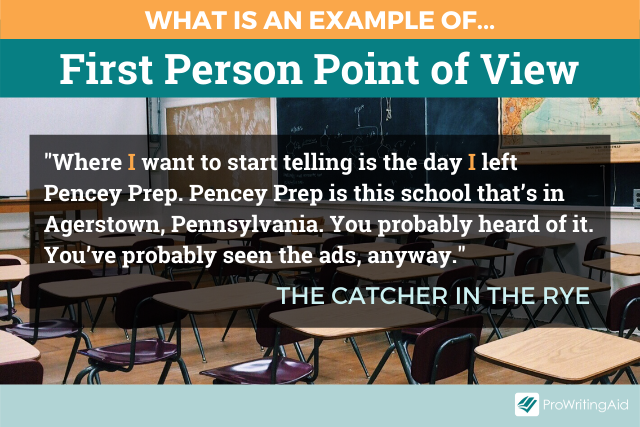
First-person narrators, just like people, aren’t necessarily reliable. They tell their side of the story. Maybe they are liars, or insane or obvious exaggerators or terribly naïve.
Patrick Bateman, the main character in American Psycho, narrates his killing spree from a first-person point of view, declaring himself a serial killer. Near the end of the novel, we learn that one of his supposed victims is alive—so can we believe Bateman’s horrific story?
Third-person POV is the most popular narration in novels these days, specifically third-person limited.
In many classics, writers told their stories from the third-person omniscient POV. This type of invisible narrative knows and sees all, and could focus its attention on different characters throughout the story. This type of third-person narration is not used as often in current fiction writing.
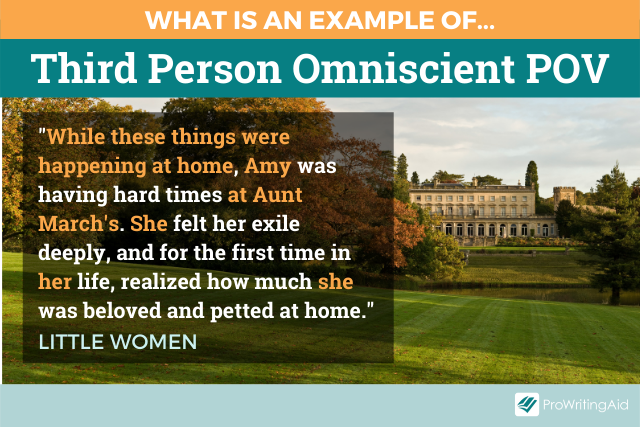
In the more popular third-person limited POV, the narrator remains unbiased and still refers to character as “he,” “she,” and “they,” but focuses the storytelling from a specific character’s perspective.
Third-person POV allows you to reveal things as a character sees them, and also hide things yet unknown by the character from the reader.
You can also control how much of the character’s inner emotion you reveal, and vary the protagonist from chapter to chapter, moving into different characters’ POV. (However, you should not do this within a scene as it’s disorienting and known as head-hopping.)
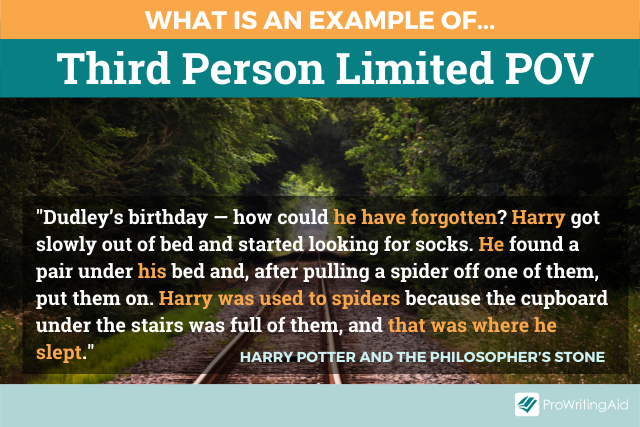
For a first novel, third-person limited POV or first-person POV is the best place to start.
5. Create a Memorable Main Character
Main characters are often what readers connect with and remember most about a story. Developing an engaging main character is as important as the story itself.
Your protagonist needs a full backstory and characteristics that make them relatable to the reader. The protagonist is who you want the reader to root for. That doesn’t mean the character has to be a “perfect” person. Perfect isn’t relatable to imperfect readers, complexity is.
Consider how you can give your character layers of experience and personality to add that complexity. Think about how you can take your character through an arc of development. How can they grow and change—even transform—throughout the story?
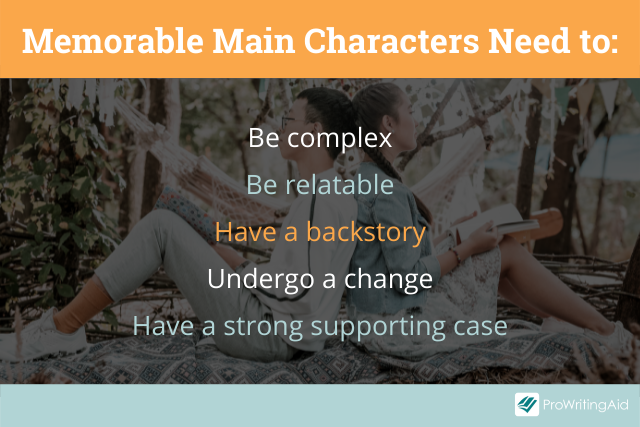
You’ll need to back up your main characters with the supporting cast. These characters should also be memorable and well developed.
If you’re unsure about how to create memorable characters, these two ideas will help you.
First, think about the character’s inner life. To connect with a character, readers have to feel like they know them, so show the readers how the character feels, thinks, or remembers. What haunts them or triggers them?
Conveying those inner emotions requires description. Instead of saying “she was upset,” you could write:
The sight of that padlock on the door made her stomach tighten and she felt her face go red. Suddenly she remembered the last time she’d been here …
This description allows the reader to empathize with the character as her memories come flooding back.
The second technique is to differentiate the character from the average person. Those distinctions lend an air of intrigue, piquing readers’ interest in, and response to, the character.
Sherlock Holmes is an ingenious detective, which is impressive. But unlike many other detectives, he is a cold, dispassionate, violin-playing drug addict.
Lisbeth Salander, star of The Girl with the Dragon Tattoo, is a troubled, neurodiverse, genius hacker.
Anyone who has read The Hitchhiker’s Guide to the Galaxy will forever remember Marvin the Paranoid Android!
Even though a trait may be undesirable in real life, in your novel it could be the unique element that makes your character memorable.
6. Choose a Cozy Space to Write Your Book
Just as with real estate, location matters when you are beginning to write your book.
When you’re comfortable in your space, you can focus on the task at hand and have productive writing sessions.
Most people look for writing spaces that are quiet, clean, and removed from others, with no distractions and plenty of room to manage the research or other materials you’ve gathered for the project.
But everyone is different! Others might find their ideas flow best when they’re typing on a laptop, sitting on a seat in a coffee shop with headphones on.
If you have options, test them out. Take notice of both how and where you work best and how and where you are most distracted.
The point is to choose a space that works for you and becomes part of your writing routine.

7. Create and Follow a Good Writing Routine
When you’re just starting your writing career, you’ve probably still got your day job and limited time to work on your book. Finding the best time to write is as important as finding the best writing space.
Take inventory of how you spend your time. You may literally want to document how you spend your time for a few days to see where writing can fit your schedule, or how you can adjust your schedule to fit in writing time.
Test out different times if that flexibility is available to you. If you find you work better at night, perhaps you swap out some TV time for writing. If you’re an early riser, set your alarm one hour earlier and set aside the quiet of the morning for writing.
Whatever your preference, you must ultimately set aside time for regular writing periods. You’ll probably have to sacrifice some non-essential activities from your schedule.
Hold these sessions daily. That’s the best way to develop a strong habit.
Then set yourself a daily or weekly word count as part of your routine. The number itself doesn’t matter, but it should be one that makes sense with your time constraints and your writing goals. Whether you set your goal at 500 or 3,000 words, sticking to that commitment is what’s important.
8. Use Editing Software Like ProWritingAid
Next, think about the tools of the trade that suit you best. For most people, the choice is between putting a pen to paper or fingers to a keyboard.
Writers who use pen and paper for their first drafts often say the method helps them avoid the distractions that come with computers. There is no internet or social media on a blank piece of paper.
Some find a stronger sense of connection to their words when using pen and paper, or find satisfaction in physically filling a page with writing.
Of course, even pen and paper loyalists will have to use a computer at a later point in the editing process.
Neil Gaiman uses pen and paper for his first draft.
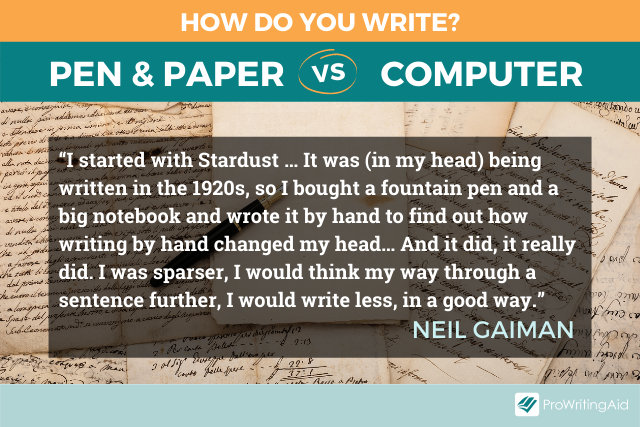
Nowadays, most writers prefer the speed and efficiency of computers to help them write their first draft, last draft, and every draft in between.
Computers also bring convenience to the editing process. Microsoft Word, the software writers often have to use to submit their manuscripts, has helpful formatting abilities and provides surface-level grammar and spelling checks.
Scrivener is software designed specifically for writers. It allows you to organize your writing with a user-friendly drag-and-drop system. You can set up individual scenes, chapters, and acts, and organize research and character studies in different sections.
It also works well with ProWritingAid’s Desktop App. You can edit your Scrivener documents with ProWritingAid and save the changes back to the original.
If you need help minimizing distractions but don’t want to use a pen and paper, several apps can help.
The Freedom app allows you to turn off all distractions, while FocusWriter allows you to write on a full screen with no pop-ups or tabs in the background.
When you’ve drafted a segment or chapter and want to refine your work, use ProWritingAid’s grammar checker.
This editing tool is extremely thorough and does far more than catch grammar and spelling errors. It provides a detailed evaluation of every aspect of your writing style, including sentence structure, sensory details, dialogue tags, and more.
It’s also a personal writing coach, offering writing advice and tips as you move through your writing journey.
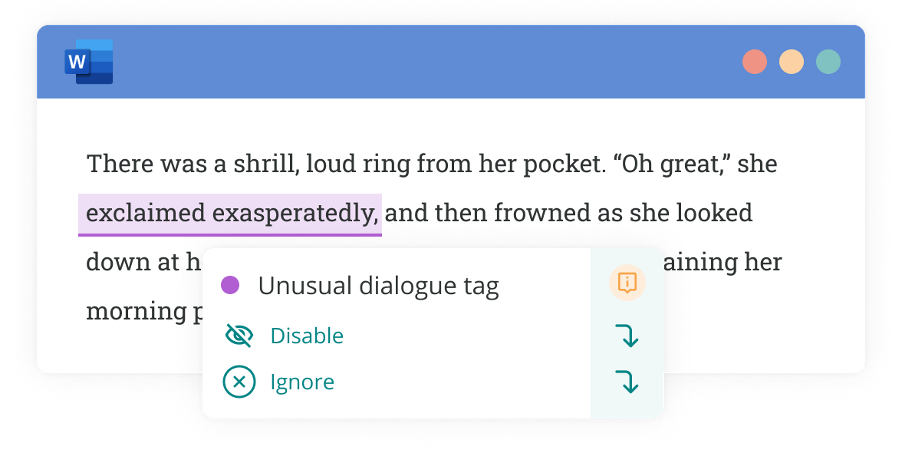
Sign up for a free ProWritingAid account to start editing smarter today.
9. Write the First Chapter of Your Novel
There are two schools of thought regarding the opening line and opening chapter of your novel.
The first says you shouldn’t get hung up on writing the perfect opening. Instead, you should just keep writing, rather than spending too much time stressing over that first chapter.
The second says that the first line and chapter are worth the extra time. Many of the greatest novels of all time have opening lines and chapters that grab their readers’ attention right from the start.
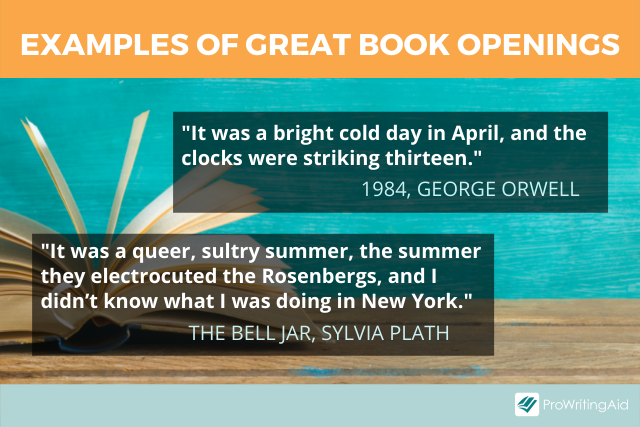
“It was a bright cold day in April, and the clocks were striking thirteen.”—1984, George Orwell
“It was a queer, sultry summer, the summer they electrocuted the Rosenbergs, and I didn’t know what I was doing in New York.”—The Bell Jar, Sylvia Plath
An impressive first line has the power to pull a reader into your book immediately. You might only have a few moments to convince bookshop browsers to buy. Give your opening line and first page the power to persuade!
Literary agents will most likely only read the first chapter of a manuscript when deciding whether it’s worth a full read or should be tossed aside.
Your first chapter will help set the tone and direction of the book in your own mind. We mentioned earlier that George R.R. Martin formed Game of Thrones from the scene where the Starks find the direwolf pups:

“One day, the first chapter of ‘Game of Thrones’ came to me... I mean, that single sentence: They found the direwolf pups in the summer snows. I knew they were the summer snows, so this was a place where it snowed even in summer. So, what could result in that?”
The first chapter is important because it allows you to settle into your world and build your ideas. In the end, it’s probably worth spending extra time working on the first chapter and getting it right so you know where you are going with the rest of the book.
However, if you’re completely stuck, consider a third option, which combines those two schools of thought. Don’t spend too much time on that first chapter if you feel you’re just not getting it right and aren’t making progress with your work. Move on with the story.
When you’ve written some or all of the story, go back to that first chapter and put in the time you need to get it right.
Final Thoughts
How can you start writing a novel? Start writing, keep reading, and use all the writing tips in this post to guide you!
Did I mention you need to start writing? That’s the most important first step and there’s no other way around it. Once you get going, keep going!
(updated by Allison Bressmer)


